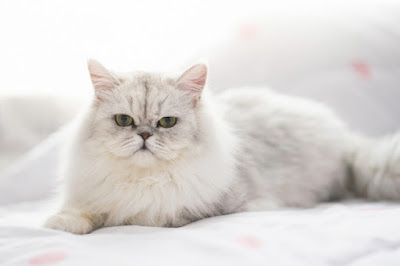While they are adorable to behold and beautiful, animals with flat faces do come with certain issues one must be aware of. Any animal belonging to a flat faced/snub nosed breed come with health concerns pertaining to breathing and the respiratory system, which is why mitigating any stressors is a must. But what is one to do when travel makes your pet anxious? Stressors can exacerbate issues, after all.
Don’t get me
wrong, you can travel with your flat-faced friend perfectly safely, regardless
of the misconception that such breeds cannot fly. However, it is important to
understand why such a journey can be stressful for them, as you’ll then be able
to make good decisions regarding your journey. Travelling with your pet can
become a memorable experience, provided you carefully consider the various
aspects of travel and stressful situations.
Regardless of the breed, cats are cats; they are creatures of routine, and change is not something that they welcome with open paws. If anything, cats enjoy a familiar and predictable environment. Travelling is the farthest thing from familiar and predictable, so the situation will likely put your cat on alert from the get-go. Add to this the fact that their only prior experience with travelling is to and from the vet, and you have the stressful conditions your cat abhors.
Here Are A Few Aspects for the Same While Travelling with Your Pet.
Airflow and
Ventilation
Brachycephalic or
flat faced cats will always have trouble breathing, regardless of the
conditions, due to the way their respiratory systems have evolved to fit in the
smaller area of a flat face. The first thing to ask before your journey is if
your chosen airline allows flat-faced cat to fly at all, as some airlines
refuse to fly such breeds citing the risk, and some airlines impose rigorous
regulations for a snub nosed/flat faced animal to fly. If your travel is
domestic in nature, try looking for airlines which will let you carry your cat
in the cabin with you. Internationally, flat faced cats are typically allowed
to fly in-cabin if the flight duration isn’t prohibitively long, and if the
country you’re entering does not require pets to arrive as cargo.
Regardless of
whether your pet is flying in cabin or in cargo, they will need to be inside an
IATA-approved fiber crate. While you might think you can take your pet out of
the crate and cuddle them in your lap while flying, airline regulations
highlight the fact that your pet must be in their crate for the entirety of the
journey. For them to travel in cabin with you, their crate will have to fit
under the seat in front of yours, so you might need to re-plan if you have a
large crate measurement.
If your cat must
travel in the cargo bay, make sure you go for a pet friendly airline. This is
important, as such an airline will have planes with pressure and temperature-controlled
cargo bays, meaning your pet gets the same environment down there as you do in
the cabin. For flat-faced and snub-nosed cats, opt for a pet crate/kennel with
extra headroom, maybe going a size or two above the normally mandated size in
their sizing guides. Bear in mind that your crate can only fly inside an IATA
approved crate, as they are designed to be durable and have plenty of airflow
throughout it; the latter being especially important for your flat faced
friend.
Temperature and
Climate Control
Both extremes of
the weather scale are not ideal for travelling with your pet. Airlines
themselves will refuse to fly pets during certain months of the year, as the
risks associated with travel during extreme climate are simply not acceptable. If
your cat is flat faced, plan your travels to be in cooler climate. The risk in travel is
minimized greatly if done in cooler climate and with the shortest route
possible.
Hot and humid climate only worsens
their already laboured breathing, and they can suffer from heatstroke if their
bodies aren’t cool enough. Unlike a snub-nosed dog like a pug, a flat faced cat
cannot pant. Couple this with the fact that their breathing isn’t the easiest
during the best of times, and you have every reason to avoid travelling during
hot climate. Avoid travelling with your flat faced cat in temperatures
exceeding 25o Celsius.
Distance to Destination
Shorter trips are less likely to
stress your cat out than longer ones. So, while making a choice of airline and
route to your destination, opt for the option with the least travel time; avoid
flights which stop-over and go for direct routes, and make sure you always
choose a pet friendly airline. If you need help regarding either of these
aspects of travel, you can contact us for a complete and comprehensive
itinerary with the shortest travel time to guarantee your pet’s safety and
comfort.
Health and Fitness
Its no secret that a healthy pet is a
happy pet. For flat faced cats and brachycephalic breeds, them being fit is
important, as obesity contributes to health and breathing problems when in
transit. Age is another factor to consider while travelling, and senior pets
require extra care to avoid any issues. Consult your vet in either case and
follow their advice when it comes to your pets health and safety while
travelling. Under any circumstance, do not tranquilize or sedate your pet, as
this can prove fatal while travelling.
If you have further queries or require
help planning your trip with your pet, call (890) 890-9020 or mail us at
enquiry@carrymypet.com. We provide domestic and international pet relocation services, with your pet being picked up from and delivered to your doorstep,
and our team of experts ensure your flat faced friend is safe, comfortable, and
happy throughout the journey.



